Many ceiling fans' choices may leave you wondering if you should match your fan to the ceiling color so that it blends in or if it could be a statement piece in the room adding to your decor. We have taken a thorough look at fan colors and styles and researched the best ceiling fan options to work for your home.
Traditionally you should select a fan that matches the ceiling color so that the fan blends. New trends allow you to personalize your ceiling fan to accentuate the room. If you want to use a fan as a statement, then consider the existing design. You can select a fan to match the floor or favorite pieces of furniture. Alternatively, think about your color palette and match the fan with the most common color in the room.
Keep reading as we discuss the color or style of the fan and how to choose a fan based on the room's size and ceiling height. We'll also look at lighting options for ceiling fans and how to coordinate fans across different rooms.
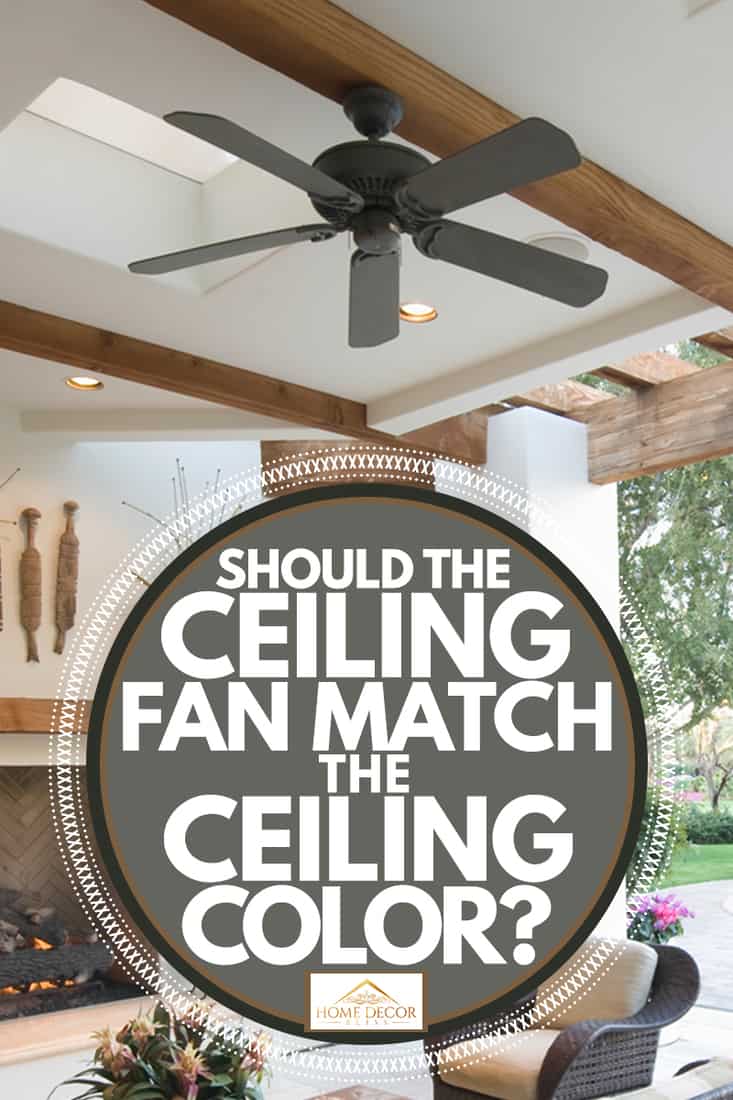
How Do You Choose the Right Colors for the Ceiling Fan and Ceiling?
To choose the right color for the ceiling, consider the size of the room. To make a large room more intimate, use a darker paint color for both the walls and the ceiling. To broaden a small room, go lighter in color. You could paint your ceiling a few shades darker than the walls to make the room feel cozy and create an illusion of a lower ceiling. Use a darker color ceiling to spotlight beautiful crown molding.
To choose the right color for the fan, think about what decor is in the room. Think about whether you want the ceiling fan to be invisible or if you want it to draw the eye. Different styles and hues can achieve either result. Let's take a look at several styles that a ceiling fan can incorporate into the room.
Antique

We may include affiliate links and curated AI content to highlight top design styles.
Consider fans with a vintage finish and intricate design. This fan would contrast well with a light-colored ceiling. However, it would remain hidden on a dark ceiling.
Click here to view this fan on Amazon.
Contemporary
Contemporary fans feature clean and smooth lines and metal finishes with minimal embellishment. This Modern Contemporary fan would be highlighted by a light-colored ceiling and casual furniture with natural textiles.
Click here to view this fan on Amazon.
Rustic
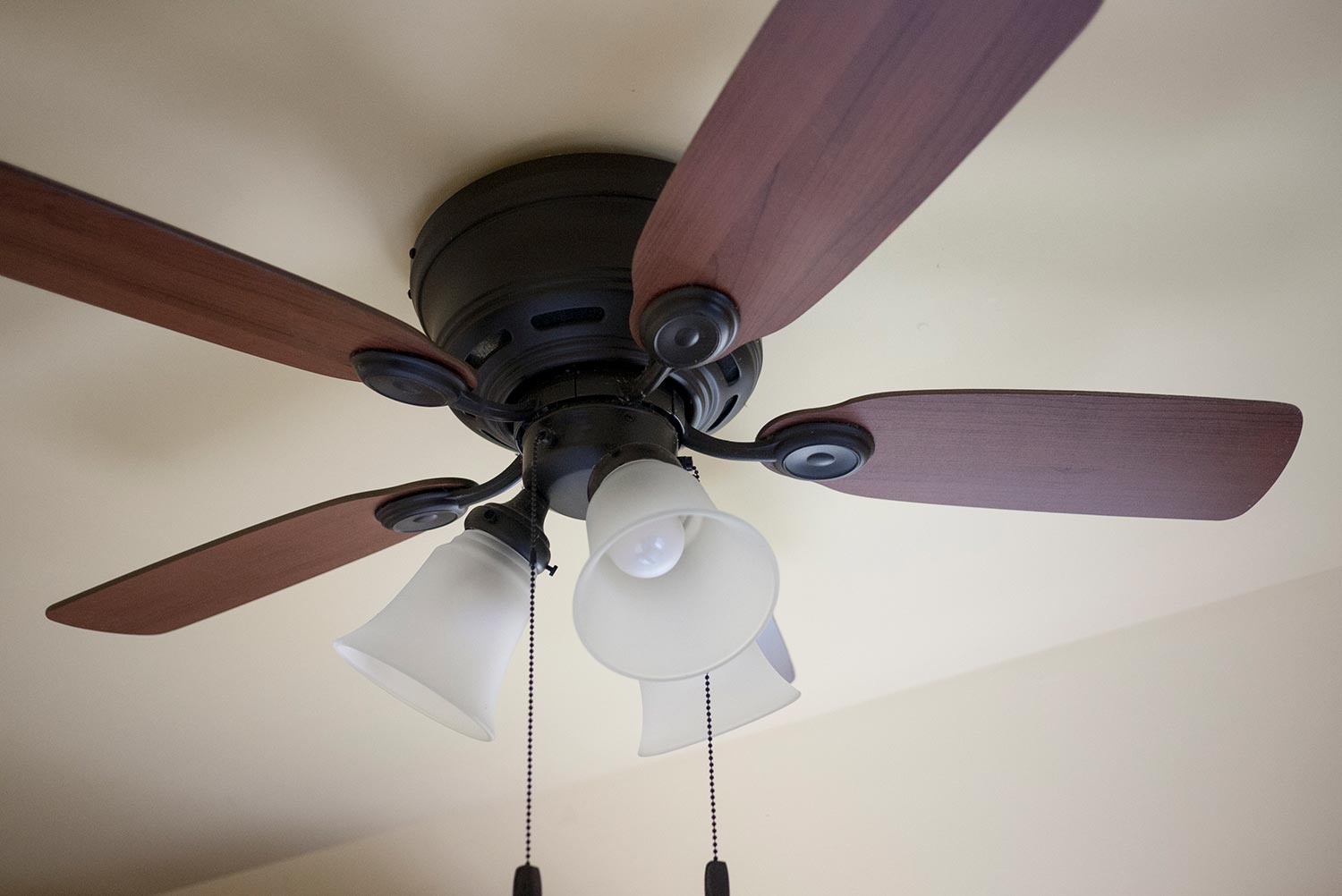
Rustic fans have dark wood finishes with homey accessories. Use with a muted colored ceiling and cabin style furniture.
Click here to view this fan on Amazon.
Beachy

Island fan styles use palm leaves and bamboo with distressed wood finishes. Pair this fan style with bright colors and natural patterns.
Click here to view this fan on Amazon.
DIY Your Personal Style
If you don't care for the options available, you can also paint ceiling fan blades for an authentic one of a kind style. If you would like more information about painting the ceiling fan, visit our post "How To Paint Ceiling Fan Blades?" for some great instructions.
What Color Ceiling Fan is Best?
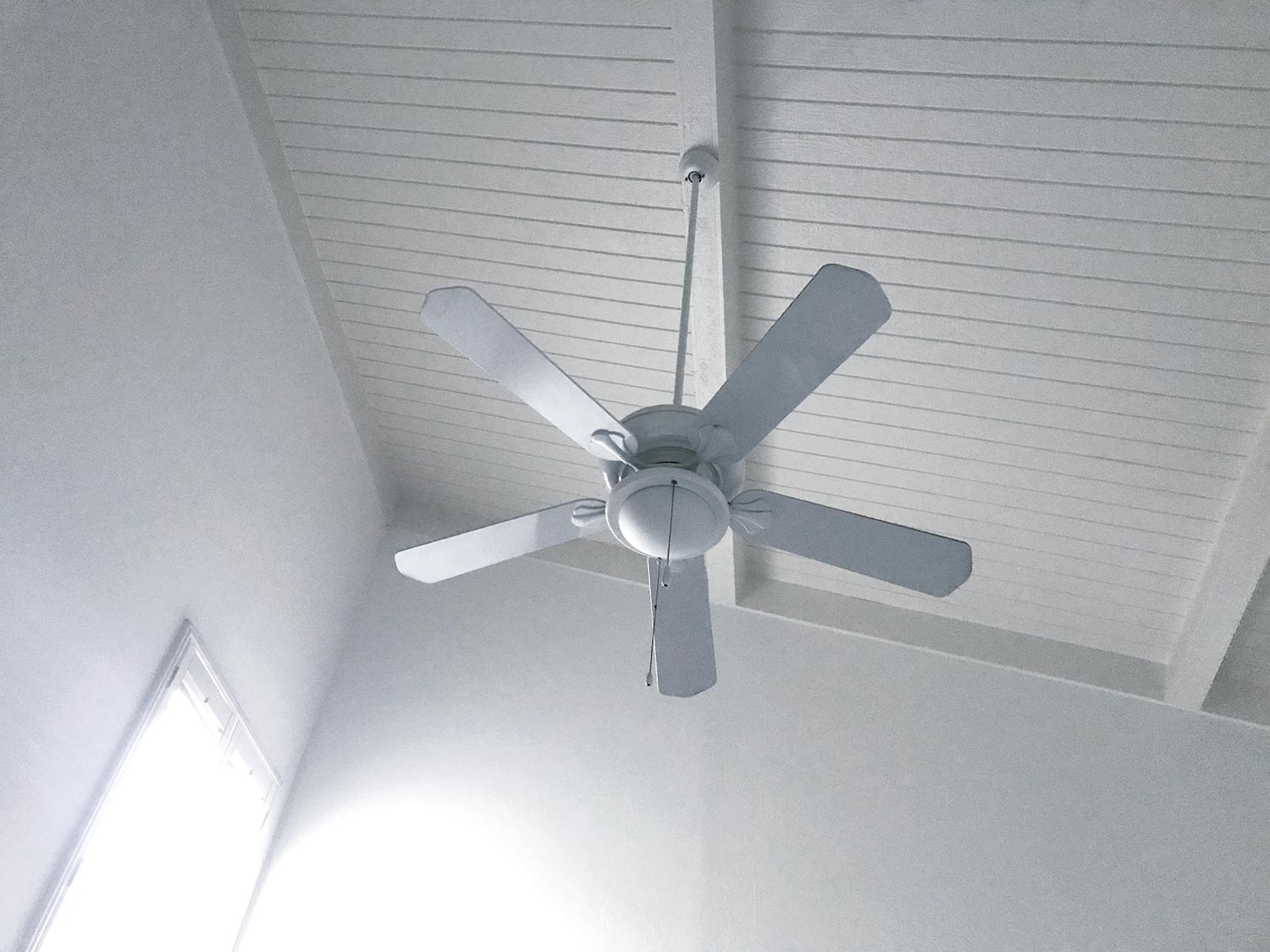
Default to white for a simple and elegant look when you are unsure. It will match most ceilings and will blend discreetly with your ceiling. This 56-inch spanned ceiling fan would go well over a living room.
Click here to view this fan on Amazon.
Are White Ceiling Fans Out of Style?
White-colored fans will always be in style because they are always elegant, simple, and provide a clean aesthetic. This color blends with most ceilings, yet on a darker ceiling, white fans contrast, drawing the eye to the rafters' design without losing the fans' allure.
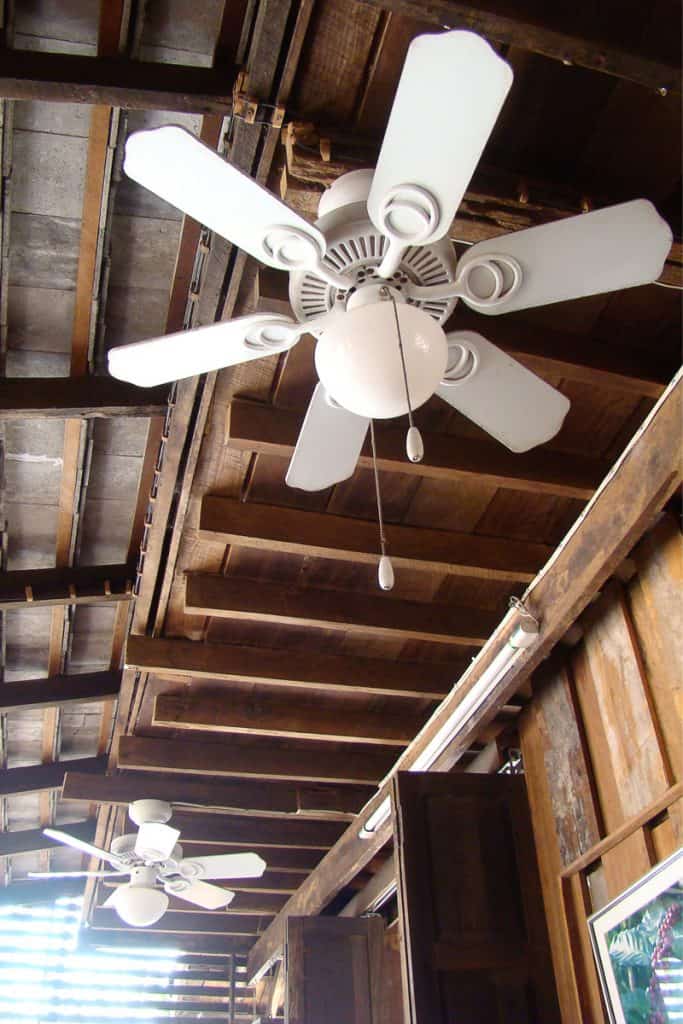
Should Your Ceiling Fans Match?
Ceiling fans do not have to match each other. Each room will be of different size and feel. In an open floor plan where you are putting up multiple fans in a space with a living area, dining area, and kitchen without defined boundaries, you may want to match the fans for continuity.
Coordinate the Ceiling Fan With The Room
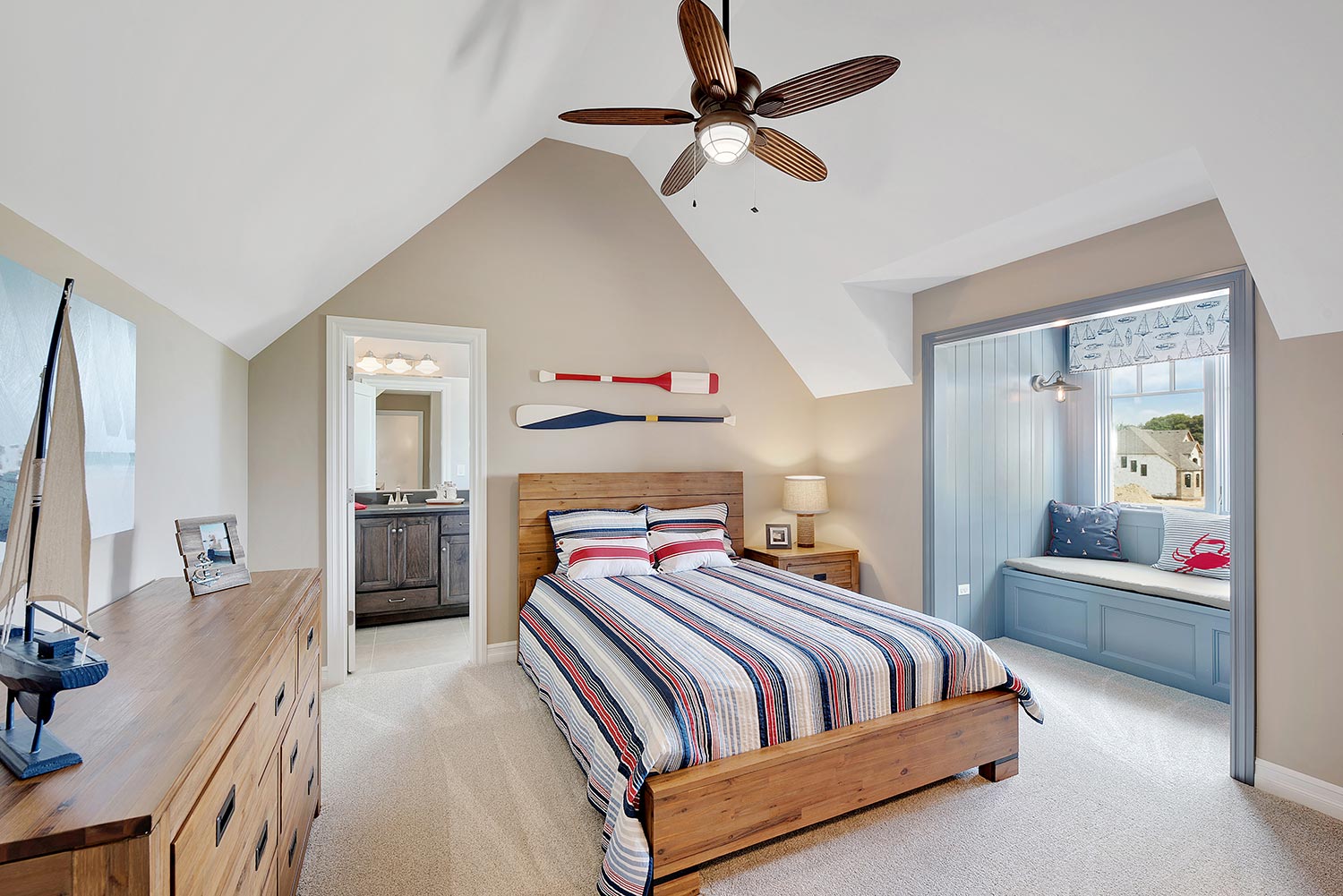
While colors and styles are likely your primary considerations to choose the right ceiling fan, you should also consider the room size and ceiling height. Factoring these dimensions will help you select an appropriately sized fan, so it does not look too small or overpower the room. If you require or prefer a ceiling light, you can also consider fans with lighting incorporated into the overall design.
Room Size
Look at the ceiling height and the square footage of the room. On average, fan blades cover between 24-inches to 80-inches. Check the manufacture guidelines to make sure the blade span is right for your room. A general rule of thumb for each room size is as follows:
- Use a fan covering 36-inches or less for a room size up to 75-sq.ft.
- A room between 75- to 144-sq.ft. needs a fan between 36- and 42-inches.
- The size range of 144- to 225-sq.ft. does best with a fan size of 44- to 50-inches.
- Larger than 225-sq.ft. would work best with fan spans between 50- to 54-inches.
Ceiling height
Matching the fan's hanging distance with the ceiling's height will ensure the best airflow and emphasize room ambiance. Use a ceiling fan that blends with the ceiling color and flush mounts to the ceiling for a low hanging ceiling. A flush-mounted model will provide enough head clearance for safety, yet keep the room feeling spacious. This low profile fan is perfect for a low ceiling.
Click here to view this fan on Amazon.
For tips on how to make the ceiling appear higher, read "How To Make The Ceilings Look Higher?"
You can let a flush mount fan hang various heights to accommodate any ceiling by adding a down rod. Keep the fan between eight to nine feet from the floor to allow for the best airflow. The short downrod featured on the fan below lowers it by four inches.
Click here to view this fan on Amazon.
Add an extension downrod that comes in lengths of 12-inches to 72-inches for exceptionally high ceilings. Make sure the rod coordinates with the fan. Below is an example of a 24-inch downrod.
Click here to see this downrod on Amazon.
Ceiling Fan Light Fixture Combinations
There are three basic light bulb types to consider when purchasing a ceiling fan, LED, halogen, or fluorescent. Keep in mind that you can select either warm or cool whites, depending on the bulbs.
An LED light consumes minimal energy and runs for about 50,000-hours. LEDs work well for any room's style and provide either warm or cool white light. A dimmable LED light fixture with a fan combination could be ideal for a room that needs versatility when sometimes you want brightness and sometimes not.
Click here to view this fan on Amazon.
Halogens have an average life of 1,500-hours. These bulbs give off a warm light and are best for fans that are within reach. These work best with lower ceilings as they will need to be changed out more often than LEDs or fluorescents.
Click here to view this fan on Amazon.
Fluorescent light bulbs have an average life of 10,000-hours and provide either warm or cool lighting. These bulbs are sufficient for most settings.
Click here to view this fan on Amazon.
In Closing
You do not have to match the ceiling fan to the ceiling color, and ceiling fans do not have to match one another throughout the house. Choose a fan by considering the room size, ceiling height, and lighting requirements. White-colored fans are stylish and versatile, but you can consider styles and colors to tie-in your room's decor and accentuate the fan as a feature item.















I think Ideally, it is not mandatory that ceiling fan color should match with ceiling color. it may be some other color.
Thanks for sharing the informative article.
Thanks for sharing the informative article.